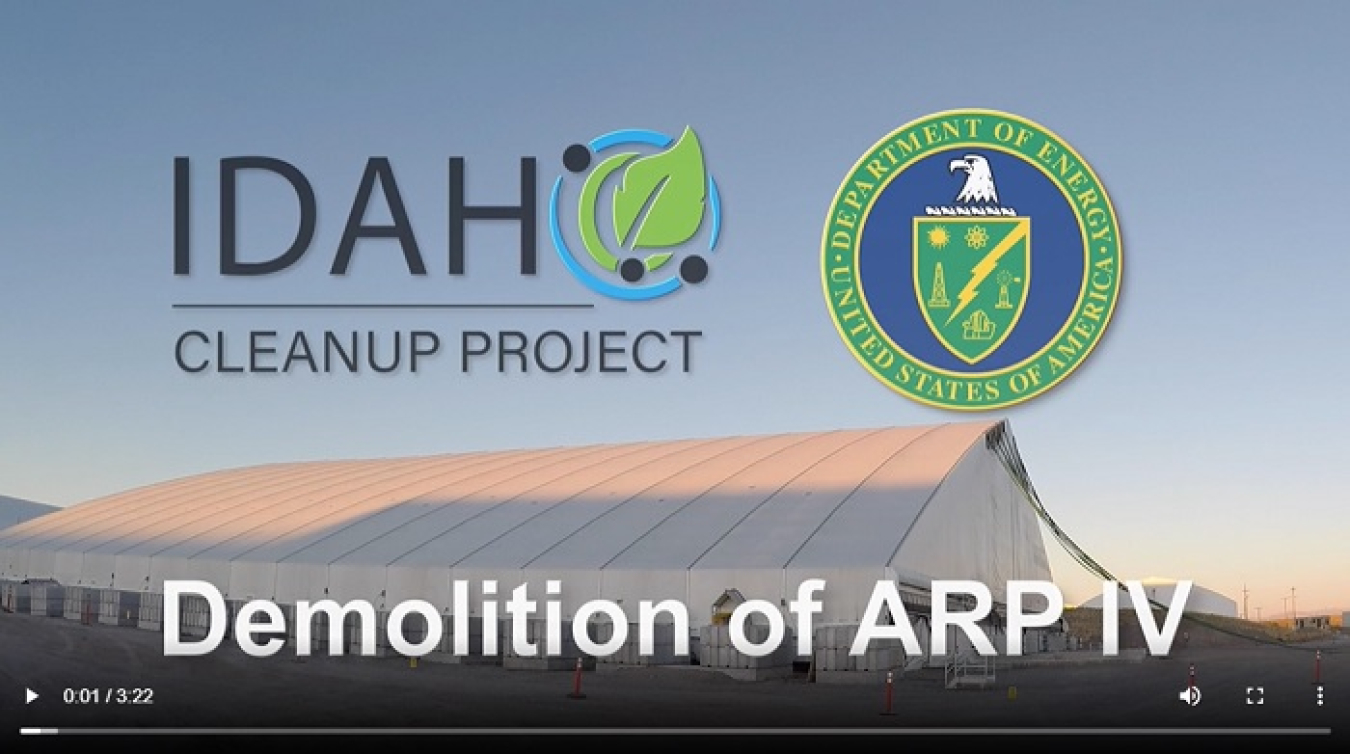EM crews recently demolished the first of the remaining structures over the Idaho National Laboratory (INL) Site’s Cold War-era landfill following the completion of targeted buried radioactive waste retrieval there earlier this year.
Office of Environmental Management
November 1, 2022
NEW VIDEO ALERT: Watch EM crews tear down a soft-sided structure that had been used in the retrieval of targeted buried waste at a Cold War-era landfill at the Idaho National Laboratory Site.
IDAHO FALLS, Idaho – EM crews recently demolished the first of the remaining structures over the Idaho National Laboratory (INL) Site’s Cold War-era landfill following the completion of targeted buried radioactive waste retrieval there earlier this year.
Workers with EM INL Site contractor Idaho Environmental Coalition (IEC) tore down the Accelerated Retrieval Project (ARP) IV facility at the Subsurface Disposal Area (SDA) after completing extensive decontamination work. They decontaminated its interior fabrics, equipment and structures, applied fixative to interior portions of the building to affix contamination in place, and added clean soil. The ARP IV structure and associated debris will be buried in place in the 97-acre landfill.
“We took our operations experience with the facility and applied it throughout facility deactivation,” said IEC Operations Manager Jerome Starks. “We learned something every day with this project.”
The fabric structure bound to steel framework was constructed in 2009 to retrieve targeted waste. Workers removed waste such as filters, sludges and reactive uranium material called roaster oxides, shipped there from the former Rocky Flats Plant near Denver, Colorado. Following completion of waste exhumation, ARP IV was used to store waste, equipment and soil.
The SDA, now a triangular-shaped section of the Radioactive Waste Management Complex (RWMC), was established in 1952 for shallow burial of contaminated INL Site waste. From 1954 to 1970, the landfill accepted Cold War weapons waste from sites in Colorado, New Mexico and other waste generators throughout the U.S.
In 2008, EM, the U.S. Environmental Protection Agency and state of Idaho agreed to exhume waste from a combined area of the SDA totaling 5.69 acres. That project was completed in March, about 18 months ahead of schedule. The effort helped protect the Snake River Plain Aquifer.
Engineers from RWMC used a computer model to demonstrate the proper number of structural components to be removed from ARP IV, sufficiently weakening the structure to a point where with the proper applied force, it could be pulled to the ground.
Work is progressing on deactivating ARP V. Crews will then shift to deactivate ARP II and III this winter. The remaining ARP structures at the SDA will be dropped in place and covered with soil.
To receive the latest news and updates about the Office of Environmental Management, submit your e-mail address.

